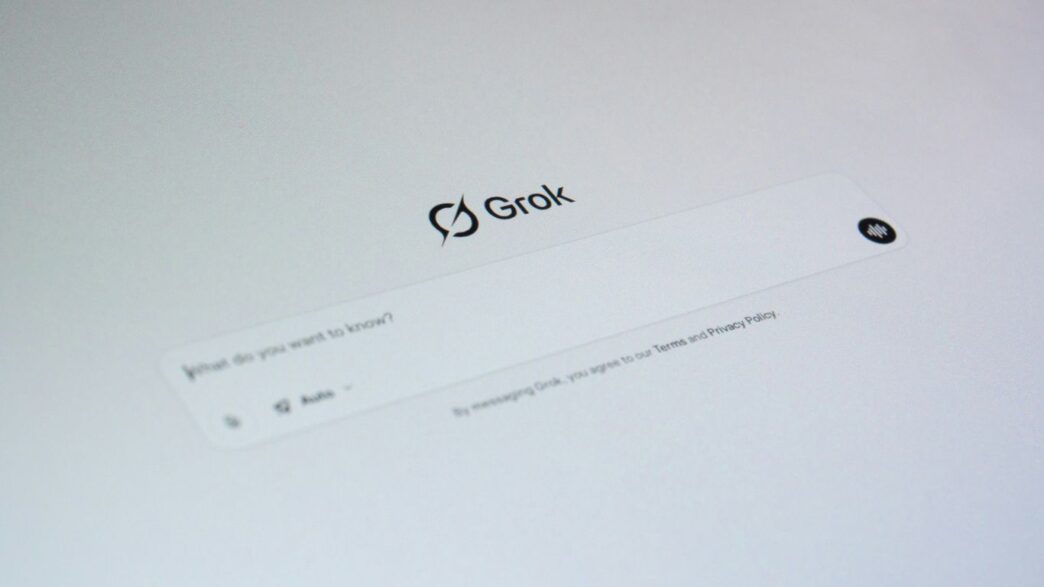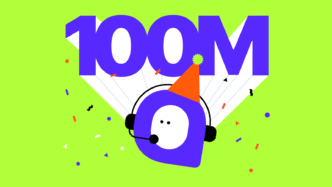Understanding Is ChatGPT Generative AI?
So, is ChatGPT actually a form of generative AI? The short answer is yes, absolutely. But like a lot of things in tech, the full picture is a bit more interesting than a simple yes or no.
The Core Functionality of Generative AI
At its heart, generative AI is about creating something new. Think of it like an artist who can paint a picture or a musician who can compose a song. Generative AI models are trained on massive amounts of existing data – text, images, music, you name it. They learn the patterns, styles, and structures within that data. Then, when you give them a prompt, they use that learned knowledge to generate entirely new content that resembles the data they were trained on, but isn’t just a copy.
ChatGPT’s Foundation in GPT Architecture
ChatGPT is built upon a specific type of AI model called the Generative Pre-trained Transformer, or GPT for short. This architecture is designed to understand and generate human-like text. It’s like having a super-powered prediction engine for words. The "pre-trained" part means it’s already gone through a huge learning phase, absorbing information from a vast library of text and code from the internet. This initial training is what gives it its broad knowledge base.
Pre-training and Fine-tuning Processes
Think of pre-training as ChatGPT going to college and absorbing tons of books and articles. It learns grammar, facts, different writing styles, and how ideas connect. This is mostly an unsupervised process, where the AI figures out patterns on its own. After that, there’s a phase called fine-tuning. This is like giving ChatGPT specialized training for a specific job. It’s trained on a smaller, more curated set of data to make its responses more helpful, accurate, and aligned with what humans expect. It also uses something called Reinforcement Learning from Human Feedback (RLHF), where real people rate its answers, helping it learn what makes a good response and what doesn’t. This iterative process is key to making it so good at conversation.
How ChatGPT Generates Content
So, how does ChatGPT actually do its thing? It’s not magic, though it can feel like it sometimes. At its heart, ChatGPT is built on something called the Transformer architecture. Think of it as a really smart way for the AI to read and understand language, paying attention to which words in a sentence are most important to each other, even if they’re far apart. This is key to how it figures out what you’re asking and how to respond.
The Role of Transformer Architecture
The Transformer architecture is the engine behind ChatGPT’s language skills. It uses a mechanism called "self-attention." Basically, when it reads your prompt, it doesn’t just look at words one by one. It looks at all the words at once and figures out how they relate. For example, in the sentence "The cat sat on the mat, and it was fluffy," the "it" refers to the "cat." The Transformer is really good at making these kinds of connections, which helps it understand context much better than older AI models.
Predicting the Next Word
Once it understands your prompt, ChatGPT’s main job is to predict what word should come next. It’s like a super-powered autocomplete. Based on all the text it was trained on – books, websites, articles, you name it – it calculates the most likely word to follow the sequence it has so far. Then it picks that word, adds it to the sequence, and does it all over again. This process repeats, word by word, building up sentences and paragraphs that hopefully make sense and answer your question.
- It analyzes the input prompt to grasp the user’s intent.
- It draws upon its vast training data to identify relevant patterns and information.
- It probabilistically selects the most fitting next word to continue the generated text.
- This iterative process allows it to construct coherent and contextually relevant responses.
Reinforcement Learning from Human Feedback
Just predicting the next word isn’t enough to make ChatGPT truly helpful. That’s where Reinforcement Learning from Human Feedback, or RLHF, comes in. OpenAI has people review the AI’s answers and rank them. Was the response helpful? Was it accurate? Was it safe? This feedback is used to train the AI further, teaching it what kind of answers humans prefer. It’s like giving the AI a coach that helps it get better and better at communicating in a way that’s useful and aligned with what people expect. This is a big reason why ChatGPT feels so much more natural and conversational than older chatbots.
Distinguishing ChatGPT from Search Engines
It’s easy to get confused when you first start using tools like ChatGPT. People often ask if it’s just another way to search the internet, like Google. While there’s some overlap now with newer AI-powered search features, ChatGPT, at its core, isn’t a search engine. It can’t actually browse the web in real-time to find current information or give you links to where it found something. Think of it more like a super-smart autocomplete.
ChatGPT as an Advanced Autocomplete Tool
At its heart, ChatGPT is built to predict the next most likely word in a sequence. It’s been trained on a massive amount of text data – books, websites, articles, and more. Because of this, it’s incredibly good at stringing words together to form coherent and relevant-sounding sentences and paragraphs. When you ask it a question, it uses its training to generate a response that statistically fits what you’re asking. It’s like having a really knowledgeable friend who can talk about almost anything, but they’re pulling all their knowledge from what they’ve read up until a certain point.
Limitations in Web Searching and Sourcing
This is where the difference from a search engine really shows. A search engine’s job is to find existing web pages that match your query and present them to you. ChatGPT doesn’t do that. It generates text based on its training data. This means:
- No Live Web Access: It can’t check current news, stock prices, or the weather unless that information was part of its training data (which has a cutoff date).
- No Direct Sources: It won’t typically give you a list of links to the websites it ‘learned’ from. It synthesizes information, it doesn’t cite it like a research paper.
- Knowledge Cutoff: Its understanding of the world stops at the last update of its training data. So, it won’t know about events or developments that happened after that point.
The Phenomenon of AI Hallucinations
Because ChatGPT is generating text based on patterns, sometimes it can get things wrong in a very convincing way. This is often called "AI hallucination." Instead of saying "I don’t know," it might make up plausible-sounding facts, details, or even citations. For example, if you ask for information about a person, it might correctly state their current job but then invent details about their past education or previous roles that aren’t true. Similarly, it might create fake book titles or academic papers with made-up authors and URLs. This is a key reason why you can’t rely on it for factual accuracy without cross-checking, especially for important information. It’s a powerful tool for creativity and drafting, but not a definitive source of truth like a well-curated search result page might aim to be.
Applications and Capabilities of ChatGPT
So, what can you actually do with ChatGPT? It’s more than just a fancy chatbot. Think of it as a versatile assistant that can help out in a bunch of different areas. It’s pretty good at understanding what you’re asking, even if you don’t say it perfectly, and it can whip up text that sounds pretty natural.
Enhancing Customer Service Interactions
Remember those clunky chatbots you used to deal with? ChatGPT is a whole different ballgame. Companies are using it to power customer service bots that can actually handle a lot of common questions and problems without needing a human to step in. This means quicker answers for customers and less repetitive work for support teams. For example, travel sites are using it to help folks sort out booking issues or find information. It’s like having a super-efficient helper available 24/7.
Boosting Idea Generation and Content Creation
Staring at a blank page? ChatGPT can be a real lifesaver for writers, marketers, or anyone who needs to create content. You can ask it to brainstorm blog post ideas, draft outlines, or even write initial versions of articles. It’s not going to replace human creativity, but it can definitely get the ball rolling and save you a ton of time. Imagine needing to write a social media post for a new product – ChatGPT can give you a few different angles to start with, which is way better than starting from scratch.
Facilitating Language Translation and Education
Language barriers are becoming less of a problem thanks to tools like ChatGPT. It can translate text between languages pretty accurately, which is handy for everything from understanding foreign websites to communicating with people across the globe. In education, it’s showing up as a kind of personalized tutor. It can explain tricky concepts, help students fix mistakes in their work (especially coding!), and generally provide tailored support. It’s like having a patient study buddy who’s always available to go over the material.
Advanced Features and Customization
ChatGPT isn’t just a one-trick pony that spits out basic text. It’s got some pretty neat tricks up its sleeve that let you do more with it, especially when you start digging into its advanced capabilities. Think of it like having a really smart assistant who can adapt to what you need.
Mastering Multiturn Conversations
One of the coolest things is how it handles conversations that go back and forth. You know, where you ask a question, it answers, and then you ask a follow-up based on its answer? ChatGPT is built for that. It can keep track of what you’ve been talking about, so you don’t have to repeat yourself. This makes interacting with it feel way more natural, almost like chatting with a person who remembers the context. It’s super helpful when you’re trying to figure something out step-by-step or when you need detailed guidance.
Leveraging Conditional Text Generation
Ever needed text written in a specific style? Maybe you need a formal email, a casual social media post, or a creative story. ChatGPT can do that. You can give it instructions about the tone, style, or even the audience you’re aiming for, and it’ll try its best to match it. This is a game-changer for content creators or anyone who needs to switch writing styles frequently. It’s like having a chameleon writer at your disposal.
The Power of Fine-tuning for Specific Tasks
This is where things get really interesting. You can actually train ChatGPT on your own specific data to make it better at particular jobs. Imagine needing an AI that understands complex medical jargon or can accurately pull data from scientific reports. By fine-tuning, you can teach ChatGPT these specialized skills. It’s been shown to achieve high accuracy rates, sometimes even outperforming other models, when trained on niche topics like identifying chemical compounds or summarizing research papers. This means you can tailor it to be an expert in almost any field you need it for.
Ethical Considerations and Future Developments
So, we’ve talked a lot about what ChatGPT can do, but it’s also super important to think about the not-so-fun stuff, you know? The ethical side of things and what’s coming next.
Addressing Misinformation and Bias
One of the biggest headaches with AI like ChatGPT is that it can sometimes just make things up, or worse, repeat biases it learned from the internet. If the data it trained on had some messed-up ideas or just plain wrong facts, ChatGPT might spit those out too. This is a real problem, especially when people ask about serious stuff like health. Imagine getting bad medical advice from an AI – that’s not good. It’s like if you learned everything from a textbook that had a few chapters written by someone who wasn’t paying attention. Organizations are trying to build rules and guidelines to make AI more honest and fair, but it’s a tough puzzle.
Navigating Privacy and Copyright Concerns
Then there’s the whole privacy thing. All that data used to train these models? Some of it might be personal. So, there are questions about who sees what and how our information is being used. And what about who owns the stuff ChatGPT creates? If you ask it to write a poem, who gets the credit? You? The AI? The company that made it? It’s a legal gray area that’s still being figured out. Plus, with AI writing more and more, there’s a worry about job displacement. Some jobs might change a lot, and we’ll probably need to figure out new skills for people.
The Evolving Landscape of AI Agents
Looking ahead, things are getting even more interesting, and maybe a little wild. We’re seeing AI move beyond just answering questions to becoming more like actual assistants. Think about AI agents that can actually do things for you, like manage your schedule or even help with complex projects. They’re getting better at planning and figuring things out, which is pretty cool. Customizing these AI tools for specific jobs, like helping doctors or programmers, is also a big trend. It’s like having a super-smart helper tailored just for your needs. The goal is to make these tools more helpful and less like a fancy autocomplete, but it means we’ve got to keep an eye on how we use them responsibly.
So, Is ChatGPT Generative AI?
Alright, so we’ve talked a lot about ChatGPT. Is it generative AI? Yep, pretty much. It’s a super smart computer program that’s learned a ton about language by reading mountains of text. It’s not a search engine, though, so don’t expect it to fetch live web pages or always get facts perfectly right – it sometimes makes stuff up, which is kind of wild. But for writing, brainstorming, or just chatting, it’s pretty amazing. As this tech keeps getting better, we’ll see it pop up in more places, helping us out with all sorts of tasks. Just remember to use it wisely and keep those ethical questions in mind as we go forward.














